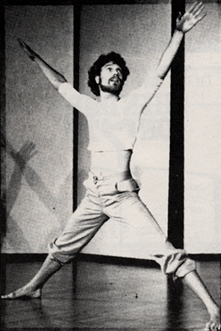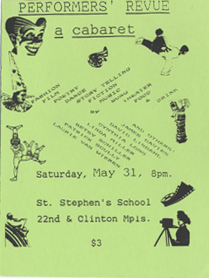Difference between revisions of "West Bank Firehouse"
m (Protected "West Bank Firehouse" [edit=sysop:move=sysop]) |
|||
| (2 intermediate revisions by one other user not shown) | |||
| Line 41: | Line 41: | ||
<small>(3)</small>Patrick Scully Collection, "Press" Box (Box 37), Jean-Nickolaus Tretter Collection in GLBT Studies. | <small>(3)</small>Patrick Scully Collection, "Press" Box (Box 37), Jean-Nickolaus Tretter Collection in GLBT Studies. | ||
| − | <small>(4)</small>Gold, Rachel. "Anonymous Donor Gives Patrick's Cabaret a Performance Home." | + | <small>(4)</small>Gold, Rachel. "Anonymous Donor Gives Patrick's Cabaret a Performance Home." ''Focus Point'', 11/25-12/1/1998. Front Page. |
Part of [[Minneapolis/St. Paul, MN: 100 Queer Places in Minnesota History, (1860-1969), (1969-2010)]] | Part of [[Minneapolis/St. Paul, MN: 100 Queer Places in Minnesota History, (1860-1969), (1969-2010)]] | ||
Latest revision as of 11:23, 1 May 2010
The “West Bank” of Minneapolis is arguably the most dramatic site of change in the Twin Cities. It began as a neighborhood of European immigrants with schools, churches, trolley service, banks, and yes, a firehouse (No.5).. By the 1950s, the University of Minnesota sought to expand its campus across the Mississippi River, and Interstate 94 was planned to meet Interstate 35W nearby—by 1969, much of the area’s residential stock disappeared.
| The University’s new campus produced an unintended complimentary population of radical leftists and hippies—these communities settled in the remaining fragments of housing stock. Another radical change occurred in 1973, when the City of Minneapolis funded the enormous Cedar-Riverside public housing complex.
|
Patrick Scully Performs his interpretation of "Pride in 1977. Courtesy of the Jean-Nickolaus Tretter Collection. |
| Flyer from Patrick Scully's first cabaret in 1986. |
In 1986, Scully gave his first cabaret performance in the basement of St. Stephen’s church at 2211 Clinton Avenue—“Patrick’s Cabaret” moved to its present space, another old fire station (No.21), in 1998.(4) The theater is a mainstay of the Twin Cities GLBT art scene—its supportive atmosphere and affordable price has helped to launch countless local artists.
The old West Bank Firehouse remains, but it is now the Mixed Blood Theater, and part of a growing neighborhood of East African immigrants. |
(1)Twin Cities Pride Guide, 1977.
(2)Robertson, Allen. "Contact Workgroup" The Minnesota Daily, 4/21/1978. Page 9AE.
(3)Patrick Scully Collection, "Press" Box (Box 37), Jean-Nickolaus Tretter Collection in GLBT Studies.
(4)Gold, Rachel. "Anonymous Donor Gives Patrick's Cabaret a Performance Home." Focus Point, 11/25-12/1/1998. Front Page.
Part of Minneapolis/St. Paul, MN: 100 Queer Places in Minnesota History, (1860-1969), (1969-2010)

